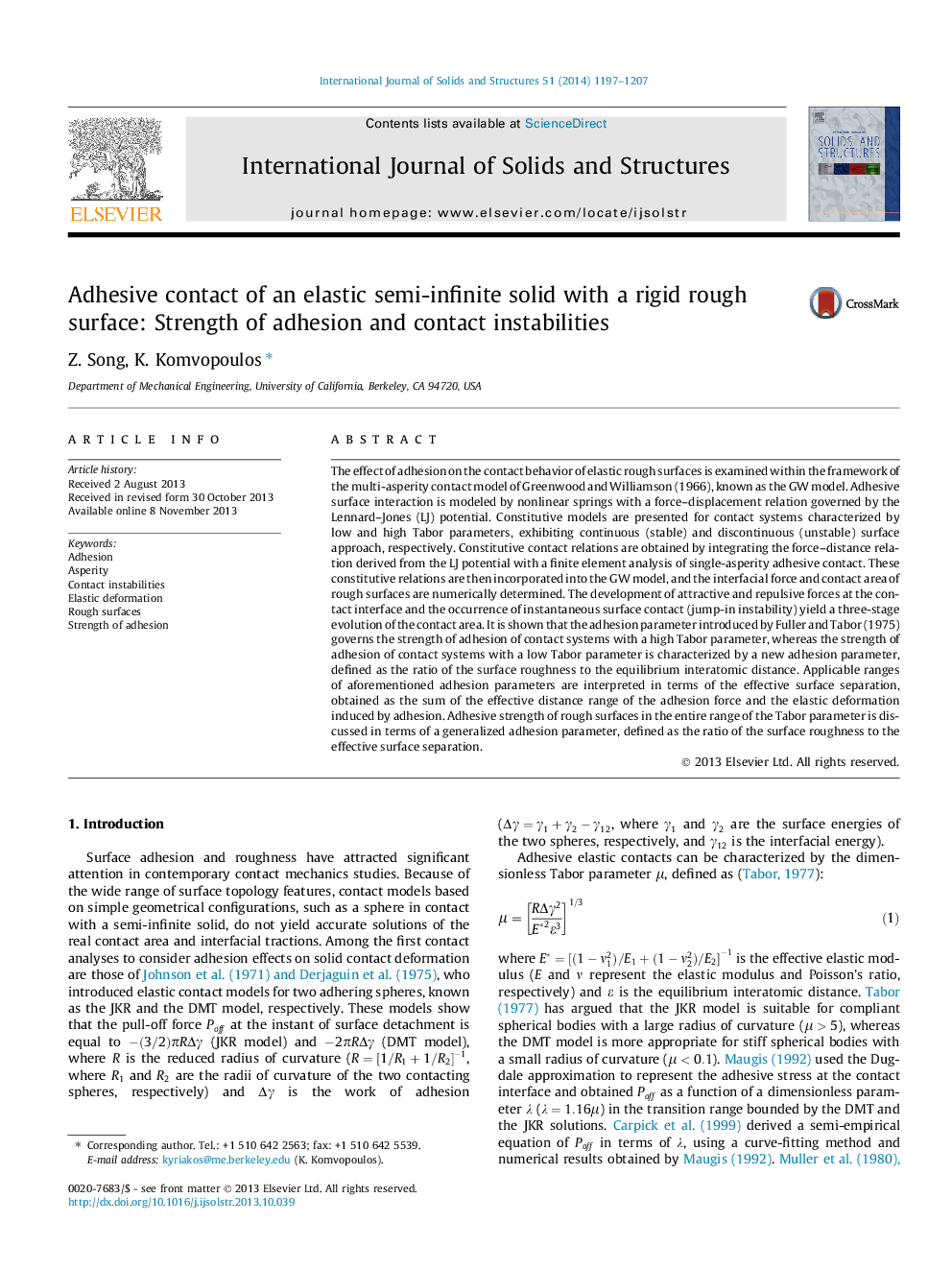| کد مقاله | کد نشریه | سال انتشار | مقاله انگلیسی | نسخه تمام متن |
|---|---|---|---|---|
| 277751 | 1430244 | 2014 | 11 صفحه PDF | دانلود رایگان |
The effect of adhesion on the contact behavior of elastic rough surfaces is examined within the framework of the multi-asperity contact model of Greenwood and Williamson (1966), known as the GW model. Adhesive surface interaction is modeled by nonlinear springs with a force–displacement relation governed by the Lennard–Jones (LJ) potential. Constitutive models are presented for contact systems characterized by low and high Tabor parameters, exhibiting continuous (stable) and discontinuous (unstable) surface approach, respectively. Constitutive contact relations are obtained by integrating the force–distance relation derived from the LJ potential with a finite element analysis of single-asperity adhesive contact. These constitutive relations are then incorporated into the GW model, and the interfacial force and contact area of rough surfaces are numerically determined. The development of attractive and repulsive forces at the contact interface and the occurrence of instantaneous surface contact (jump-in instability) yield a three-stage evolution of the contact area. It is shown that the adhesion parameter introduced by Fuller and Tabor (1975) governs the strength of adhesion of contact systems with a high Tabor parameter, whereas the strength of adhesion of contact systems with a low Tabor parameter is characterized by a new adhesion parameter, defined as the ratio of the surface roughness to the equilibrium interatomic distance. Applicable ranges of aforementioned adhesion parameters are interpreted in terms of the effective surface separation, obtained as the sum of the effective distance range of the adhesion force and the elastic deformation induced by adhesion. Adhesive strength of rough surfaces in the entire range of the Tabor parameter is discussed in terms of a generalized adhesion parameter, defined as the ratio of the surface roughness to the effective surface separation.
Journal: International Journal of Solids and Structures - Volume 51, Issue 6, 15 March 2014, Pages 1197–1207
